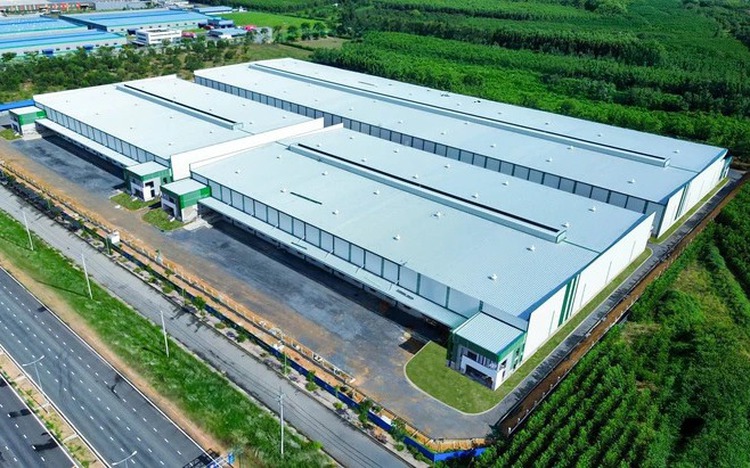
A view of KCN Nhon Trach 6D in Dong Nai Province, southern Vietnam, designed to meet LEED (Leadership in Energy and Environmental Design) standards, September 2025. Photo: Ngoc Hien / Tuoi Tre
The World Bank’s September 2025 update indicates that Vietnam’s economy remains resilient amid global volatility. This resilience is particularly remarkable when examining the rising trends in Foreign Direct Investment (FDI), which play a crucial role in shaping the country’s economic landscape.
Key Destination for FDI Inflows
Vietnam has emerged as a focal point for foreign investors, with steady FDI inflows reflecting an optimistic outlook on the nation’s growth prospects. Notably, FDI disbursement recorded an impressive US$26.2 billion in the 12 months leading up to June 2025, marking a 9.3 percent increase from the previous year. The registered FDI soared by 23.8 percent, with significant contributions from the manufacturing sector at 51 percent and real estate at 22 percent.
The rapid pace of industrialization is evident as industrial parks and ready-built factories see occupancy rates soaring to 80 percent in the north and an astonishing 89 percent in the south. This burgeoning demand is well-documented in reports from property consultancy CBRE, which notes that the industrial property market is operating at peak performance levels.
Green-Certified Factories Drawing FDI
John Campbell, the head of industrial services at Savills in Ho Chi Minh City, highlights a remarkable trend where new manufacturing projects signal not just capital inflows but also a strategic shift among investors towards establishing more resilient and flexible supply chains. One of the standout features driving this shift is the increasing focus on green-certified factories. These facilities, which prioritize renewable energy usage and compliance with Environmental, Social, and Governance (ESG) standards, are becoming pivotal in attracting foreign capital.
Occupancy rates for ready-built factories and warehouses have surged to 88-89 percent in the first half of 2025, representing the highest figures seen in the last three years. “Investors now prioritize flexibility, speed, and sustainable infrastructure,” remarked Campbell. This not only reflects a shift in priorities but also a growing awareness among investors about the importance of environmental responsibility.
Hardy Diec, COO of KCN Vietnam Group, adds more context, explaining that global investors are increasingly demanding sustainable facilities. Projects like DEEP C (Phase 2) in northern Hai Phong City and the Nhon Trach 6D facility in southern Dong Nai Province exemplify this trend by adhering to international green standards such as LEED Certification.
Furthermore, tailored supporting services designed specifically to meet foreign investors’ needs are becoming essential for smooth operations in Vietnam, helping businesses transition from entry to full-scale operations effectively.
Industrial Park Occupancy Remains High
According to the Ministry of Construction, Vietnam’s industrial property market has remained tight into the second quarter of 2025, with occupancy rates standing at 83 percent in the northern regions and an impressive 92 percent in the south. This trend underscores the robust demand in industrial hubs such as Bac Ninh, Hai Phong, Hung Yen, Binh Duong, and Ho Chi Minh City.